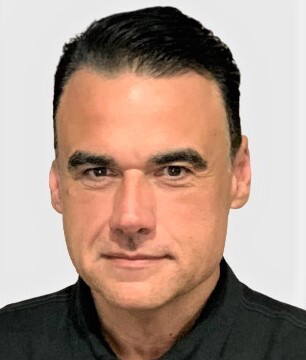Application performance monitoring (APM) is the collection of tools and processes designed to help IT professionals ensure that the applications users work with meet performance standards and provide a valuable user experience (UX). Mark Maslach, Vice President, Global Channels and Strategic Alliances, AppDynamics, tells us here how channel partners can develop their application performance monitoring practices into larger full-stack observability practices and in doing so, put themselves in a fantastic position to reap the benefits of a largely uncontested but rapidly growing new market.

The rapid shift to hybrid cloud environments to support transformation initiatives in response to the pandemic has left technologists struggling to get unified visibility across their IT infrastructure and unable to prioritise actions and investment based on what really matters most to end users. The result is IT Ops teams constantly firefighting, having to rely on multiple, siloed monitoring tools to manage an increasingly sprawling and complex IT estate.
This explains why, in our latest Agents of Transformation study — Agents of Transformation: The Rise of Full-Stack Observability — 99% of UAE technologists reported that having the ability to monitor all technical areas across their IT stack and directly link technical performance to business outcomes is now important.
But as with any relatively new technology, it can be challenging for technologists to find the proof points they need to demonstrate how a full-stack observability platform has been successfully deployed and driven value in a similar organisation. And it can be difficult to cover all the bases when it comes to financial and operational forecasting.
This is where IT leaders will increasingly be leaning on their channel partners for support during 2022, looking to tap into their knowledge and experience to build a compelling case for investment.
With that in mind, here are five tips for channel partners to help their clients build a robust business case for full-stack observability:
Demonstrate how observability is critical to Digital Transformation
Currently, most organisations don’t have the tools, processes, and cultures to align Digital Transformation and technology performance to business and commercial outcomes.
So, this is where any business case for full-stack observability should start. Only with genuine visibility up and down the IT stack, across both legacy and cloud environments, can businesses start to connect innovation and technology performance with business outcomes. By linking IT performance data with real-time business metrics, clients will be able to validate the impact of every IT action by analysing business KPIs.
Channel partners need to help clients articulate this to business leaders, showing how full-stack observability with business context can address the current measurement gap and help to embed a sustainable ‘innovation-as-usual’culture across their operations.
Present a holistic strategy
As partners know all too well, effective Digital Transformation isn’t simply about bringing in innovative new technologies — it requires new skills, processes, and thinking. Implementing full-stack observability within an IT Ops team is no different.
Partners should look to work with client stakeholders to map out how full-stack observability will be integrated from a cultural and process perspective. And they should also help clients to identify and address skills gaps, particularly within cloud monitoring and open telemetry, which require very specific skills.
Importantly, partners should work with IT leaders to develop a plan for cultural change within the IT department to ensure that teams understand and embrace the unified data that full-stack observability will deliver. Partners can play an important role in developing an internal communications plan which spells out the advantages that a single source of truth for all performance data delivers, both to the organisation, and to technologists in their daily work.
Show how full-stack observability supports cloud initiatives
Across all sectors, partners are accelerating the move into hybrid IT environments, while focusing on recurring revenue, OPEX and SaaS. But as part of this, they now need to ensure clients have the right level of visibility in place to manage and optimise performance and to always deliver faultless digital experiences.
Most full-stack observability solutions will provide a good level of visibility across the full IT estate, but the majority still struggle in cloud environments, when it comes to managing microservices and monitoring kubernetes. This represents a real threat to performance and digital experience.
Therefore, partners need to ensure clients select a solution that offers genuine full-stack observability — across hybrid cloud and legacy environments — and can support the organisation’s wider strategic move towards the cloud.
Partners are uniquely placed to look across the four areas of IT operations — AppOps and DevOps, NetOps, InfraOps, and SecOps — and to take a holistic view on technology performance and optimisation. They can help clients identify key use cases at an early stage, whether that be hybrid application monitoring or cloud native application monitoring, and work with them to scope out a solution that can accelerate their transformation goals.
Create a vision for IT performance and seamless digital experiences
Operational agility and resilience have risen to the top of the C-level agenda over the last 18 months, as organisations have had to continually pivot in response to rapidly evolving market conditions. Therefore, it’s essential that any business case details how any new full-stack observability implementation can support changing business requirements and meet massive fluctuations in demand.
The sheer volume of additional data that businesses will generate in the coming years is likely to push most IT departments to their limits, even those that have full-stack observability in place.
Partners should therefore ensure the business case demonstrates how the full-stack observability solution can eliminate the need for manual interventions and increasingly deploy automation and Artificial Intelligence (AI) to monitor data and address performance issues. They should look to show how AI will soon be able to provide real-time insights, ensuring the client is able to always deliver world-class technology performance and drive game-changing business impact.
In doing so, reseller partners can show how investment in full-stack observability is future-proofed and can support business growth.
Highlight the risks of doing nothing
Of course, any robust business case should spell out the potential scenarios for businesses that don’t invest or are too slow to move.
The business case should start by outlining the massive increase in the use of digital services that is being seen across pretty much every industry and in every country in the world, and the fact that consumers now have zero tolerance for poor digital experiences.
Set against that backdrop, the business case should examine the potential impact of IT performance issues and increased mean time to resolution (MTTR), and the knock-on effect on customer and employee experience, brand reputation and revenue.
Solution provider partners should also encourage clients to consider the negative impact that not having unified visibility of IT performance and not being able to link IT data to business metrics has on productivity and engagement within the IT department. Channel partners could work with stakeholders to calculate the proportion of time that highly skilled technologists spend firefighting issues instead of delivering on strategic innovation goals. They might also explore the heightened risk of an IT talent exodus, with technologists becoming disillusioned because they don’t have access to the latest tools to do their jobs.
The fact is that innovation-driven businesses are already starting to transition from application monitoring to full-stack observability. Organisations that don’t get on board and make this shift in the next couple of years will soon find themselves falling behind competitors.
To support clients, solution provider partners should be looking to develop their application performance monitoring practices into larger full-stack observability practices, built around the very best technology solutions on the market. They should be leaning on technology vendors to provide them with the education, training and resources they need to understand the key concepts of full-stack observability and identify the key use cases within their client base.
Those channel partners that can do this successfully over the next 12 to 24 months will put themselves in a fantastic position to reap the benefits of a largely uncontested but rapidly growing new market.


